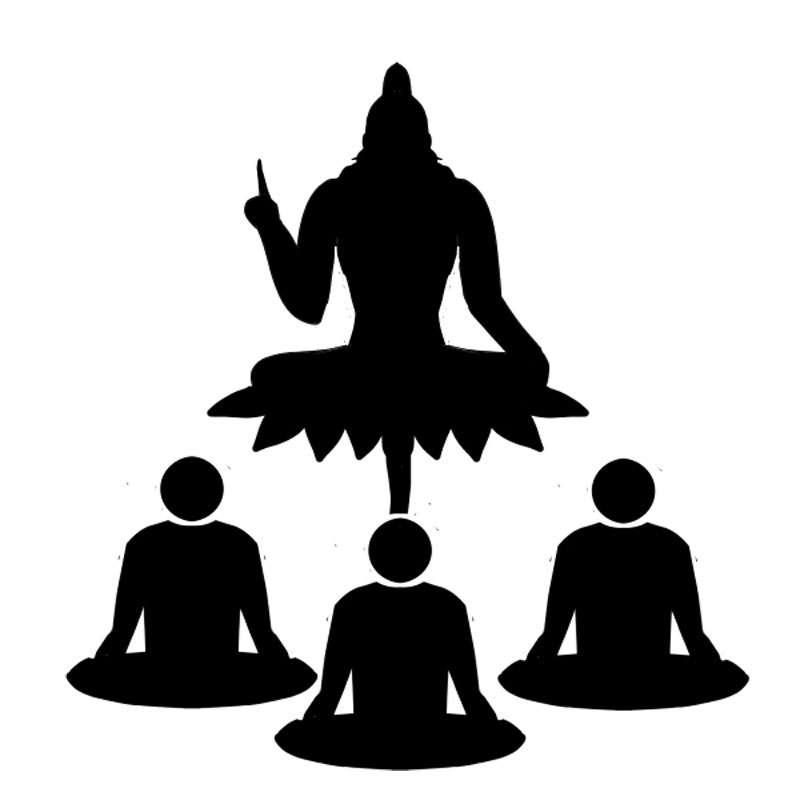
OR


Usha Pokharel
Usha Pokharel is an educationist and author of several children’s books.usha@pokharel.net
Our society needs more teachers who understand the great value of the guru shishya parampara
The term ‘Guru’ for the present generation immediately brings to mind two things: first, the movie ‘Guru’ with Abhishek Bachchan and Aishwarya Rai and second, the driver of their vehicle, also referred to as ‘Guru ji’. I doubt if their mind will go beyond those two definitions immediately upon hearing the word. The original meaning of the word is rarely used now in the context of teaching. I am sure the majority of today’s children will be surprised to know that guru is also a word used for someone who teaches, guides and shows the path to becoming a learned person.
Writes Kabir: Guru Govind Dou Khade Kake Lagu Paye; Balihari Guru Apke Govind Diyo Milaye.
(‘Both Guru and God stand before me, whose feet do I touch first? I bow down to my Guru first because without him I would have never been able to recognize God.’)
Of Kabir’s many dohas (couplets), we were frequently asked to repeat this one in our school’s exams. For us, at that age, it was just a saying. With age and experience, the deeper meaning started to surface. I know you all are thinking: so what’s new here? We all know that a teacher teaches and that’s the end of the story!
Well yes, I agree with you and that is how I took it too. We had all kinds of gurus in our school. Some were funny and entertaining, some stern, and some were like friends. Some had a big impact on our growth process. Some held our hands to show us the way. The first thing that comes to mind is concept of folding our hands in respect to the gurus of our girls’ school in Banaras, (Varanasi).
Politeness, it is said, comes from knowledge imparted by teachers. According to Hitopadesh, when a teacher provides true/complete knowledge, it teaches their students discipline, increases students’ self-worth, and leads them to wealth and happiness. If we look up our mythological stories we will find this tradition of spiritual relationship and mentoring leading to transfer of knowledge from guru to shishya going way back. In this mechanized world, internet has taken up the role of a guru.
Even where there are teachers teaching, it is difficult to find the traditional guru-shishya relationship. But I was pleasantly surprised by a recent event.
The other day I had the opportunity to attend a Teach For Nepal annual event, which proved to be the perfect opportunity for me to reflect back on the guru-shishya parampara. I could see the fellows of Teach For Nepal trying their best to follow that tradition. I am sure these fellows initially just wanted to help students of government schools to do well in technical subjects like English, Math and Science.
But, in the process, they got so involved they ended up with great reverence for the teacher-student relation, and helped mold good future citizens of the community. I could see the eager new group receiving lighted candle from the more experienced seniors. I am sure these two years of experience has made the fellows respect their own teachers more. As their fellowship comes to an end, these fellows suddenly find themselves put on a pedestal by the parents, students, and the whole community as role models for their children.
I am pretty sure the fellows had no clue when they started what to expect. It is entirely possible they never in their dreams even thought they are going to be the torchbearers of the Guru-Shisya parampara, which denotes a chain of teachers and disciples in the traditional Hindu culture: the tradition of spiritual relationship and mentoring.
I am sure their success depended on their intensive training that taught them to fulfill three levels of responsibilities to maintain a healthy guru-shisya parampara. First, to know their students individually, and to understand their environments and constraints. Next to provide a teacher’s unconditional love and affection to the students and their community, creating a learning environment and trust in the community. This in turn increases the teacher’s power to influence/make a lasting impression on the student. Finally, the teachers’ willingness to take time and reflect on their students’ progress, highlight their strengths, and help them adjust their vision in a positive and meaningful way.
Finally, we all know respect has to be earned. We also know that most times it’s the teachers who are responsible for bringing down the guru-shishya relationship to the current status. It is necessary for a teacher to play the role of lamps that remove darkness, become the lighthouse that guides the wandering ships to their rightful destinations. Hence the importance of teacher’s influence on a student should never be under-estimated. It’s because all the values that parents teach at home are further refined under the guidance of teachers in school. Having said all this I feel our society needs more teachers who understand the sanctity of the guru shishya parampara and are able to inculcate the love of knowledge in their students. Don’t you think so parents?
The author is an educationist and author of several children’s books
usha@pokharel.net
You May Like This

Foreign employment saving bond fails to attract migrant workers
Only 5.65 percent of the bond subscribed: NRB ... Read More...

Daniel Craig delays specter of retirement as James Bond
LONDON, August 16: Daniel Craig has delayed the specter of retirement as 007. ... Read More...

Former James Bond actor Roger Moore dies aged 89: family
British actor Roger Moore, who won international fame playing secret agent James Bond, died on Tuesday aged 89, his family... Read More...




_20220508065243.jpg)
Just In
- MoHP cautions docs working in govt hospitals not to work in private ones
- Over 400,000 tourists visited Mustang by road last year
- 19 hydropower projects to be showcased at investment summit
- Global oil and gold prices surge as Israel retaliates against Iran
- Sajha Yatayat cancels CEO appointment process for lack of candidates
- Govt padlocks Nepal Scouts’ property illegally occupied by NC lawmaker Deepak Khadka
- FWEAN meets with President Paudel to solicit support for women entrepreneurship
- Koshi provincial assembly passes resolution motion calling for special session by majority votes













Leave A Comment